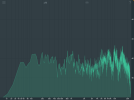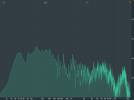RegularStereoGuy
Member
- Joined
- Jan 8, 2025
- Messages
- 26
- Likes
- 3
Not topless as in, can't be beat, but topless as in, no treble content unless I am in a straight line from the fronts of the speakers.
Off axis, even 30-40° off axis, and they sound like cotton stuffed in my ears. Is that a characteristic of 'monitors'?
I bought them used at Goodwill a couple years ago, and their sound has been otherwise satisfactory.
Off axis, even 30-40° off axis, and they sound like cotton stuffed in my ears. Is that a characteristic of 'monitors'?
I bought them used at Goodwill a couple years ago, and their sound has been otherwise satisfactory.
Last edited:




